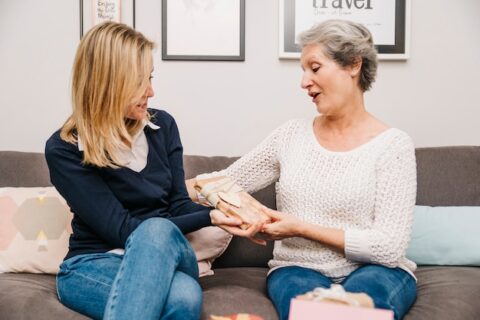In today’s fast-paced world, most people assume that pushing harder, stretching further, or training more intensely is the key to preventing injuries and recovering quickly. But the body doesn’t always respond best to force. Often, what it truly needs is awareness, gentleness, and time. This is where the power of slow, mindful movement comes in—a foundational principle of the Feldenkrais Method and one of the most effective tools for long-term recovery and resilience.
Whether you’re an athlete, someone healing from an injury, or simply dealing with everyday stiffness and pain, slowing down your movements can dramatically change the way your body functions. For anyone seeking guidance, working with a Feldenkrais Practitioner in Seattle can help you develop a deeper understanding of your body’s patterns and support a healthier, more adaptable movement system.
Why Slow Movement Matters for the Nervous System
Most injuries happen when the body is stressed, rushed, or operating on autopilot. Rapid and repetitive movements—done without awareness—can overload muscles and joints, eventually leading to strain or pain.
Slow, mindful movement interrupts this automatic pattern. When you move slowly, your nervous system receives clearer information about what you are doing. You begin to sense subtle differences in muscle tension, balance, and coordination. This heightened awareness makes it easier to avoid harmful habits that contribute to injury.
In the Feldenkrais Method, slow movement is used intentionally to help people sense how parts of the body relate to one another. By slowing down, you can detect inefficient habits—like overusing the lower back, locking the knees, or tensing the shoulders—and learn how to replace them with smoother, more efficient movement patterns.
Mindful Movement Helps Prevent Injuries Before They Happen
Many injuries occur not because of a single accident, but due to a slow buildup of movement habits that wear the body down over time. Mindful movement interrupts this cycle by helping you notice patterns early.
1. Increased Body Awareness
When you move with awareness, you can sense when something feels “off” long before it turns into pain. You start noticing the difference between good effort and unnecessary strain.
2. Better Coordination
Slow movement helps refine the timing of different muscle groups. When coordination improves, everyday tasks like walking, lifting, or reaching become more efficient and safer.
3. Reduced Muscle Tension
Many people hold chronic tension without realizing it—tight shoulders, clenched jaws, stiff backs. Slow and mindful movement softens this tension, reducing the risk of sudden strain or injury.
Why Slow Movement Is Essential for Recovery
If you’ve experienced an injury, intuitive logic might tell you to stretch harder, push through discomfort, or strengthen the injured area quickly. But recovery requires patience and subtlety.
Fast, forceful movement can irritate healing tissues and slow recovery. Slow movement, on the other hand, communicates safety to the nervous system. When your brain feels safe, the muscles relax, the breath deepens, and healing accelerates.
A practitioner trained in the Feldenkrais Method understands how to guide people through gentle movement sequences that reduce pain and promote recovery. The goal isn’t to stretch or strengthen the injured area directly—it’s to reorganize your whole movement system so the injured part no longer carries unnecessary pressure.
How Slow Movement Rebuilds Healthy Patterns
1. Rewiring Your Brain–Body Connection
The brain plays a major role in how you move. When you slow down, you strengthen new neural pathways that support healthier patterns. This is why small, simple movements—done with attention—can create dramatic improvements.
2. Encouraging Whole-Body Integration
Recovery isn’t just about the injured spot. Often, another part of the body caused the overload in the first place. Mindful movement helps distribute effort more evenly, reducing strain and building a more balanced system.
3. Restoring Confidence in Movement
After an injury, many people become afraid to move. Slow, gentle movement helps rebuild trust. As the body experiences safe, pain-free motion, the brain stops guarding so tightly and allows you to move with greater ease.
Practical Ways to Add Slow, Mindful Movement Into Your Day
You don’t need special equipment or long workout sessions. Even small adjustments can shift your nervous system into a healthier state.
- Move slower than you think you need to. If you are about to stand up, do it at half-speed and notice what changes.
- Pay attention to your breathing. Slow your breath and let your ribs expand gently.
- Explore movement without forcing anything. Bend, twist, or reach only as far as feels comfortable.
- Rest often. Pausing sends a message of safety to your nervous system.
These simple habits can prevent future injuries and support ongoing recovery.
Why Work With a Feldenkrais Practitioner?
Slow movement is powerful—but having expert guidance can make the process even more transformative.
A Feldenkrais Practitioner in Seattle can help you identify your unique movement habits and teach you how to move with ease, efficiency, and comfort. Through gentle, structured lessons, the practitioner helps you explore new patterns that reduce pain, restore function, and support long-term health.
Whether you’re recovering from an injury, dealing with chronic discomfort, or simply wanting to move with more freedom, the Feldenkrais Method offers a gentle, intelligent approach to improving your body’s natural capacity for healing.
Final Thoughts
Injury prevention and recovery don’t have to involve force, stress, or pushing your limits. Slow, mindful movement gives your body the time and attention it needs to heal and thrive. By becoming aware of how you move—and learning to move with more ease—you create a foundation for lifelong mobility, strength, and resilience.
If you’re ready to explore this transformative approach, connecting with a skilled Feldenkrais practitioner can be the first step toward a healthier, more comfortable life.




